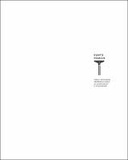Explore

Colore, stucco, marmo nel Cinquecento
Serena Quagliaroli
2022
0 Ungluers have
Faved this Work
Login to Fave
The short biography in Giorgio Vasari’ Vite represents the starting point for all the studies which aim to investigate the artist Giulio Mazzoni. Born in Piacenza between 1518 and 1519, he trained with Vasari himself and then with Daniele da Volterra. After a long and successful career in Rome, he came back to his hometown where he died in 1590. Apart from sporadic mentions in the periegetic literature and a brief essay by Arturo Pettorelli published in 1921, it is Teresa Pugliatti’s "Giulio Mazzoni e la decorazione a Roma nella cerchia di Daniele da Volterra" (1984) that tried to offer an art-historical analysis of the Emilian artist. Nevertheless, in her deeply analytic reconstruction of the Roman artistic enhttps://www.officinalibraria.net/libro/9788833671741vironment in the mid sixteenth century, Giulio struggled to clearly distinguish himself from the many other artists examined there. Differently, this book focuses closely on Mazzoni, highlighting his life trajectory and his artistic activity. For the first time, one can find here a complete picture of his activity as a painter, sculptor and stuccoworker. In fact, despite the scarce survival of entirely autographed artworks, the results gathered here demonstrate that this versatile artist was able to conquer a significant position in the Roman artistic milieu – often working together with some of the greatest protagonists of the manneristic sixteenth-century season – gaining huge appreciation in Rome and in the Farnese Duchy of Parma and Piacenza as well. This book offers a fresh image of Mazzoni based on new archival research, on-site examinations of the artworks, and deep investigations on the historical contexts. It takes the information gathered by the restoration campaigns into consideration and deals with all the updates that in the last decades have affected our knowledge and perception of Manneristic art. This book presents unpublished archival documents that change in a substantial way the previous reconstructions of Mazzoni’s career and enrich the catalogue of his artworks. For instance, thanks to new archival acquisitions and new photographic campaigns, his activity as a sculptor – which was almost absent in previous literature – is brought into full focus and receives specific attention. The attribution of new drawings increases our knowledge of his graphic oeuvre, which would otherwise be witnessed by a single sheet only. Information on the relationship with Giorgio Vasari are highly updated: their common stay in Naples in 1544-1545 is accurately reconstructed and the long-lasting friendly bond that tied them until the biographer’s death in 1574 is highlighted for the first time. Similarly, compared to the previous critical interpretation, this book describes a brand-new connections between Mazzoni and Perino del Vaga – Raphael’s Roman heir – and Daniele da Volterra, better justifying the role that Mazzoni played in several prestigious private and papal commissions. For example, the case of the most important decorative campaign carried out by Mazzoni, Palazzo Capodiferro Spada, a detail-by-detail analysis of the still-existing decorations, cross-referencing with other decorative artworks fashioned in Rome during the Farnese and Del Monte pontificates, lead to propose a new chronological framework and a more accurate description of the progress of the worksite, and to more clearly identify the specific contribution provided by Mazzoni as well. The book also shows an unprecedented interest in stucco decoration, a tecnique often neglected by scholars due to the poverty of its material components. Mazzoni was certainly one of the undisputed masters of sixteenth-century stucco decoration and he became a point of reference in relation to the spreading of this technique in the Po Valley area. These new insights into the field of moulding – stucco or marble – open important scenarios in the study of the relationship between Mazzoni and the Lombardy and Ticino artists, involving some phenomena that are now currently under examination by international scholars, such as the progressive self-establishment of Lombardy and Ticino workers in the Roman artistic and architectural production at the turn of the sixteenth century. The book is supplemented by a documentary digest that brings together all the documents concerning Giulio Mazzoni, both published (but often not transcribed) and unpublished.
This book is included in DOAB.
Why read this book? Have your say.
You must be logged in to comment.
Rights Information
Are you the author or publisher of this work? If so, you can claim it as yours by registering as an Unglue.it rights holder.Downloads
This work has been downloaded 31 times via unglue.it ebook links.
- 31 - pdf (CC BY-NC-SA) at Unglue.it.
Keywords
- Decoration
- Mannerism
- Mazzoni
- Rome
- Stucco
- thema EDItEUR::A The Arts
Links
DOI: 10.48287/1003Editions

